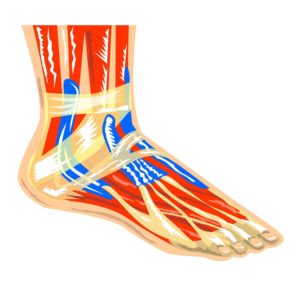
The most common cause of heel pain and pain of the bottom of the foot is plantar fasciitis, which is sometimes called Jogger’s Heel.
The next most common heel pain diagnoses are heel bursitis and achilles tendonitis of the tendon behind the heel, in that order.
What is the “Plantar Fascia”?
Plantar means “bottom of the foot.” Fascia is a type of broad, thick tendon that functions as a “bowstring” connecting the heel to the toes.
What Causes Plantar Fasciitis?
The most common cause of plantar fasciitis is repetitive stress and stretching of the plantar fascia of the heel. The second most common cause of plantar fasciitis is direct trauma, like stepping on a stone. Occasionally plantar fasciitis can be caused by gout.
Symptoms of Plantar Fasciitis:
1. Initial weight bearing pain under the heel, as opposed to behind the heel.
Much pain is felt when you get up in the morning, and then it diminishes with walking. However, it may increase later with prolonged walking or standing.
2. The pain in the heel is described as a sharp, dull ache, on stretching.
Home Remedies for Plantar Fasciitis:
Do you want to know how to start treatment for your Plantar Fasciitis? Follow these steps:
- Use over the counter arch support or heel pads.
- Apply moist cool packs periodically throughout the day to the heel and to the bottom of heel where pain is present. Try to do this for 20 minutes, 2 or 3 times daily.
- Try mild stretching by pulling your foot backward toward your ankle.
- Avoid going barefoot. It is highly advisable to wear tennis shoes when you are indoors.
- Take an over the counter pain reliever such as Naproxen (Aleve) as directed
- Supportive shoes are advised to prevent repetitive stress and stretching, and by virtue of shock absorption. Consider shoe brands such as Brooks, Nike, Asics, and New Balance.
If these measures fail to relieve pain within 2-3 weeks, schedule an appointment with your Podiatrist.
Plantar fasciitis rarely requires surgical correction, and is usually relieved with self-treatment as described in this article, or with professional treatment when necessary. However, if surgery is necessary there is a very high success rate.